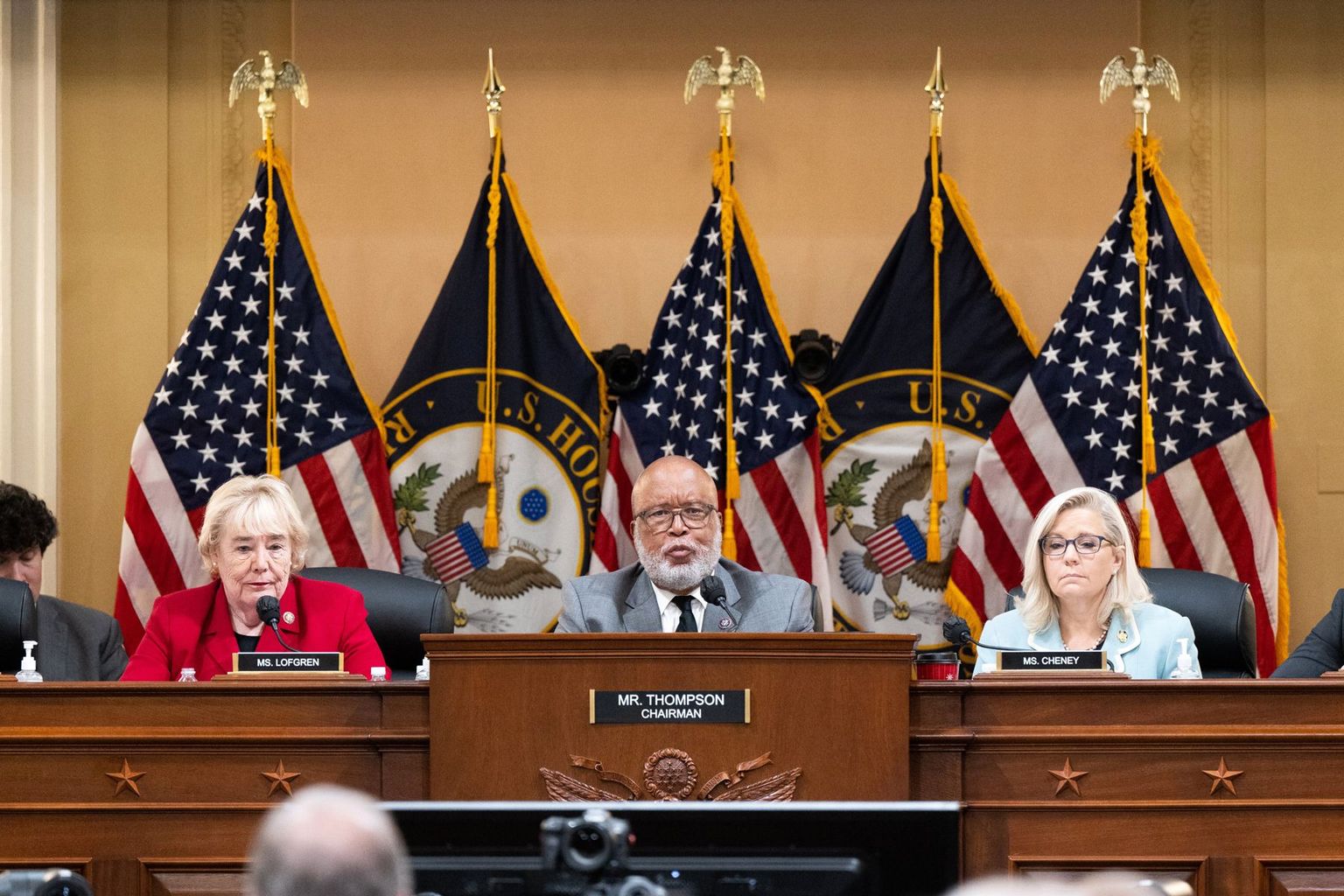Democrats wanted the Jan. 6 hearings to be a blockbuster. So they hired a storyteller.
How do you turn 140,000 legal documents into a primetime TV phenomenon? You call James Goldston.

Image: Courtesy of the Select Committee to Investigate the January 6th Attack on the United States Capitol
It must have seemed like an insurmountable challenge: take a highly complex investigation based on 140,000 legal documents and over a thousand witness testimonies, and turn it into a compelling, digestible, multi-part story that connects with a deeply divided viewing public.
After spending the better part of a year investigating the January 6 attack on the US Capitol, the group of senators comprising the House Select Committee knew that conveying the seriousness of the plot would mean packaging it up as the Watergate hearings for the Netflix generation.
The solution they arrived at almost seems obvious in retrospect: if you want to create a blockbuster, hire a blockbuster merchant. Which is how James Goldston, a one-time journalist and former president of ABC News, came to work with the committee, turning a format that usually lends itself to being dry and ponderous into something more akin to a six-episode prestige docudrama.
Depending on your perspective, Goldston was famous for either pulling traditional news into the modern era or dragging it down into a tabloid sinkhole. Eschewing anything he deemed boring for more ‘accessible’ topics, Goldston turned ABC’s news programs into a kind of educational entertainment. The formula proved a hit with viewers—some of his shows even beat out Late Nigth with David Letterman in the nightly ratings—though critics complained about the focus on pop culture at the expense of hard news.
Whatever your feelings about Goldston, his ability to draw a crowd remains undeniable. In his capable hands, the January 6 hearings have become must-see viewing: over 20 million Americans tuned in to watch the first one on June 9, which was carried live by every major US TV network except Fox. The show generated the kind of numbers usually reserved for Sunday Night Football, forcing Fox to backtrack and broadcast subsequent hearings (even if only begrudgingly).
As the hearings have gone on, other storytelling devices have become visible.
The key to Goldston’s success may be his adherence to one of the oldest storytelling rules in the book: show, don’t tell. The House Committee could have simply told viewers that the insurrection was violent and laid out the ways in which it posed a threat to the country’s stability. But that wouldn’t have been as powerful as letting the events speak for themselves.
And so, viewers were treated to tightly edited footage of rioters smashing windows and first-hand testimony that worked to place the audience in the shoes of the people on the ground. When, during the first hearing, police officer Caroline Edwards began recounting events from her perspective, the power of emotion over facts was made clear. “I was slipping in people’s blood,” she said. “I was catching people as they fell. It was carnage. It was chaos.”
As the hearings have gone on, other storytelling devices have become visible. Supporting cast members were introduced early (the first hearing paid special attention to the Proud Boys and Oath Keepers) before bigger names appeared; slapstick baddie Rudolph Giuliani was introduced in the second episode, his alleged inebriation on election night a salacious plot point.
Of course, the main spotlight was reserved for the A-lister himself: over six episodes (and counting—extra sessions have just been announced for July), Goldston’s production has painted a picture of Trump as a person prepared to do whatever it takes to stay in the Oval Office—even if it meant urging supporters he knew were armed to march on the Capitol. By structuring the hearings this way, the committee laid out a narrative, meticulously planned and told over the series’ arc, that intimated a direct path from a guy storming Congress in a horned headdress to the most powerful man in the free world attempting to undo democracy itself.
It all made for compelling viewing: each week, tens of millions of Americans have tuned in, forcing the networks to reschedule episodes of Young Sheldon, Grey’s Anatomy and Law & Order to ensure their prime-time shows could still find an audience. But as the showrunners of Young Sheldon can no doubt attest, popularity isn’t the same as critical acclaim. Conservatives were particularly angered by the committee’s focus on narrative; Republican House leader Kevin McCarthy even went so far as to accuse the Democrats of hiring Goldston “to choreograph their January 6 political theatre”.
If the point stings, it’s because McCarthy is right: the hearings are choreographed. They are a piece of political theatre. But that doesn’t make them false. As political scientist Claire Leavitt writes in The Conversation, “we should not mistake theatrics for lack of substance”. Everything presented in the hearings was based on extensive primary evidence. And while that’s different to mounting a formal court case with strict laws of evidence and overarching principles of reasonable doubt, it’s important to remember that the hearings were never meant to result in a conviction.
In a way, they serve an even higher purpose.
As Leavitt argues, the production allowed viewers to see history being written in real time. “These hearings will inform future history textbooks, movies and novels that depict the first non-peaceful transfer of power in American history,” she says. If she’s right, Goldston will have achieved the committee’s goal of creating a modern-day Watergate. Whether that finally consigns Trump to a Nixon-like villain status is a matter for the television-watching masses.
